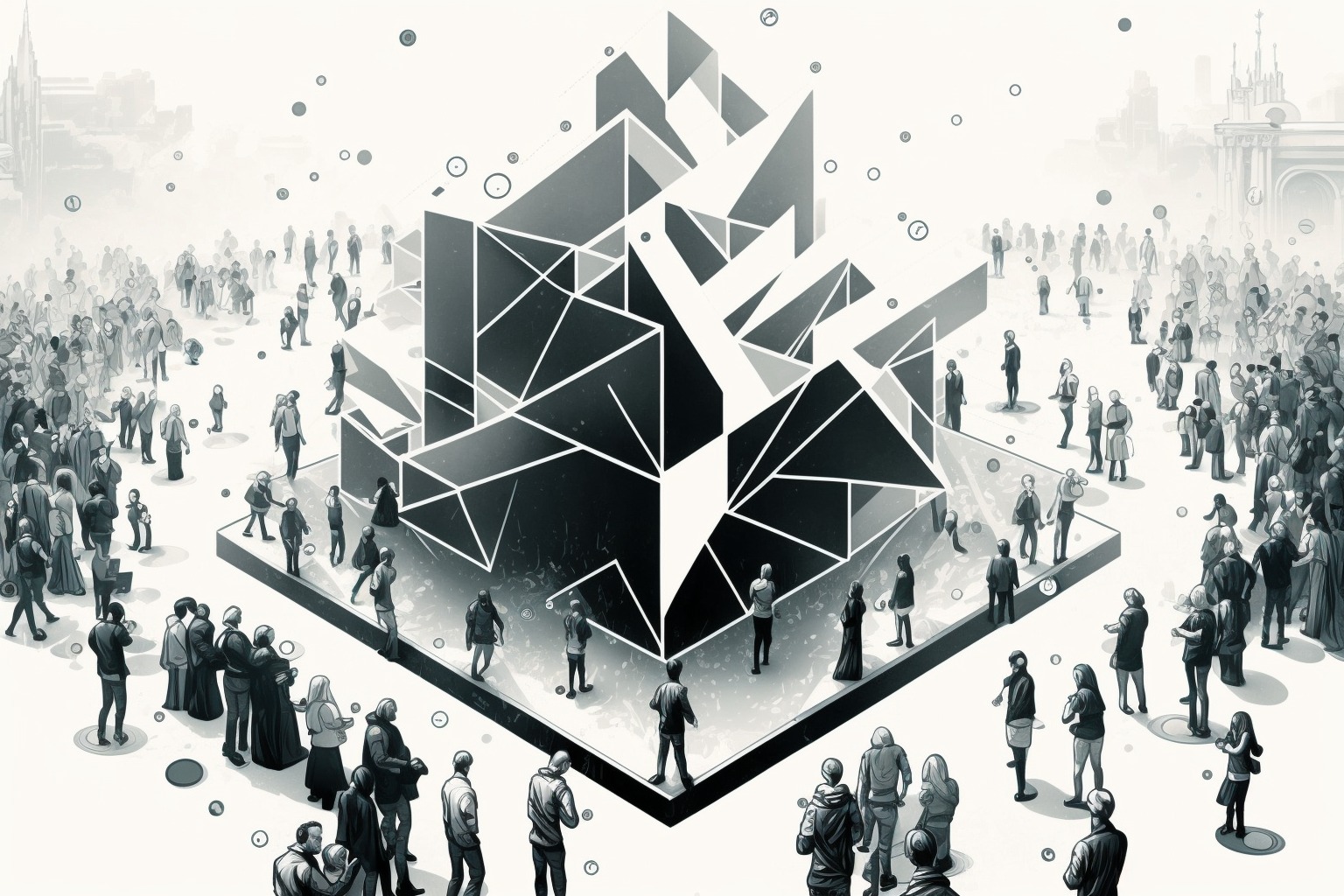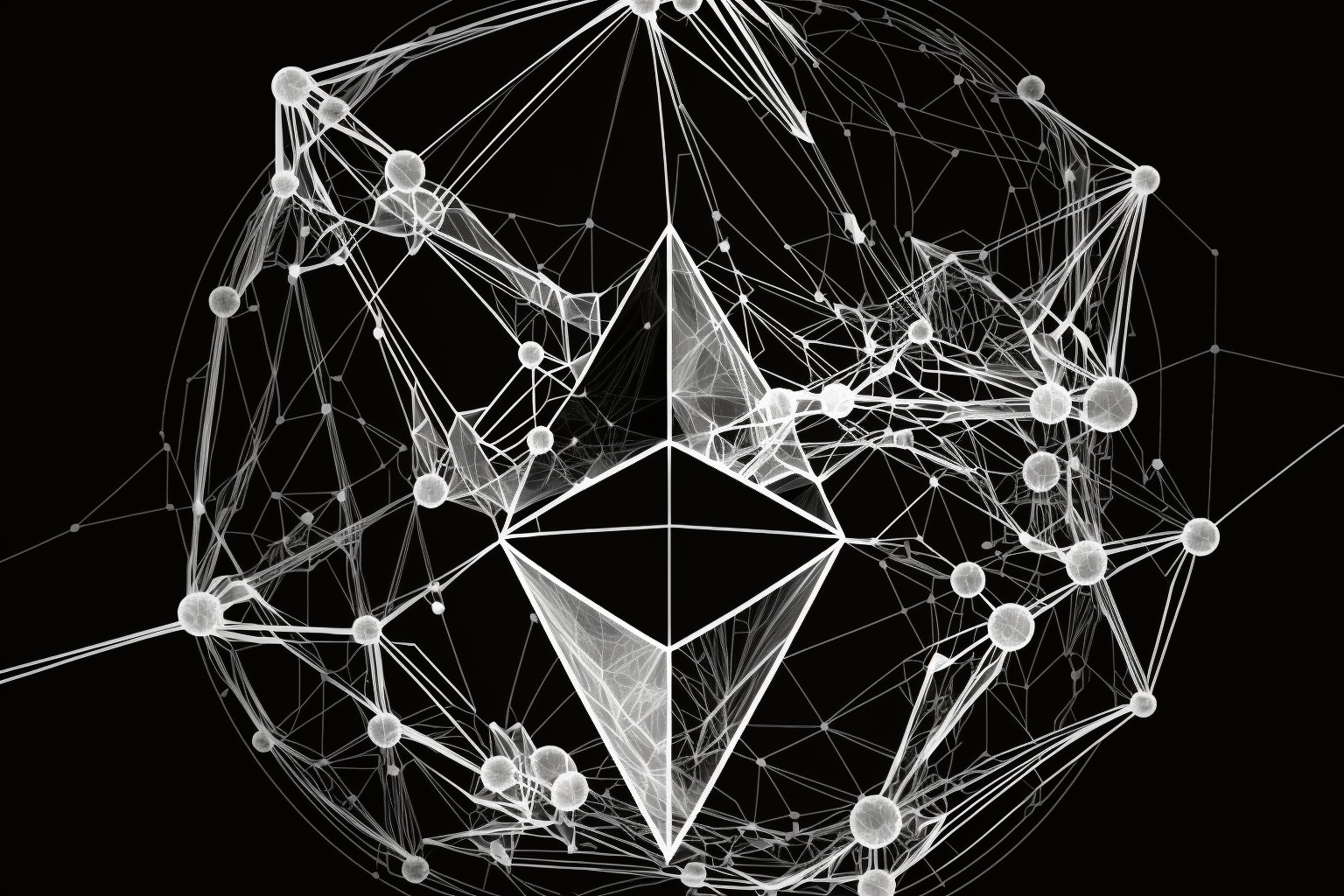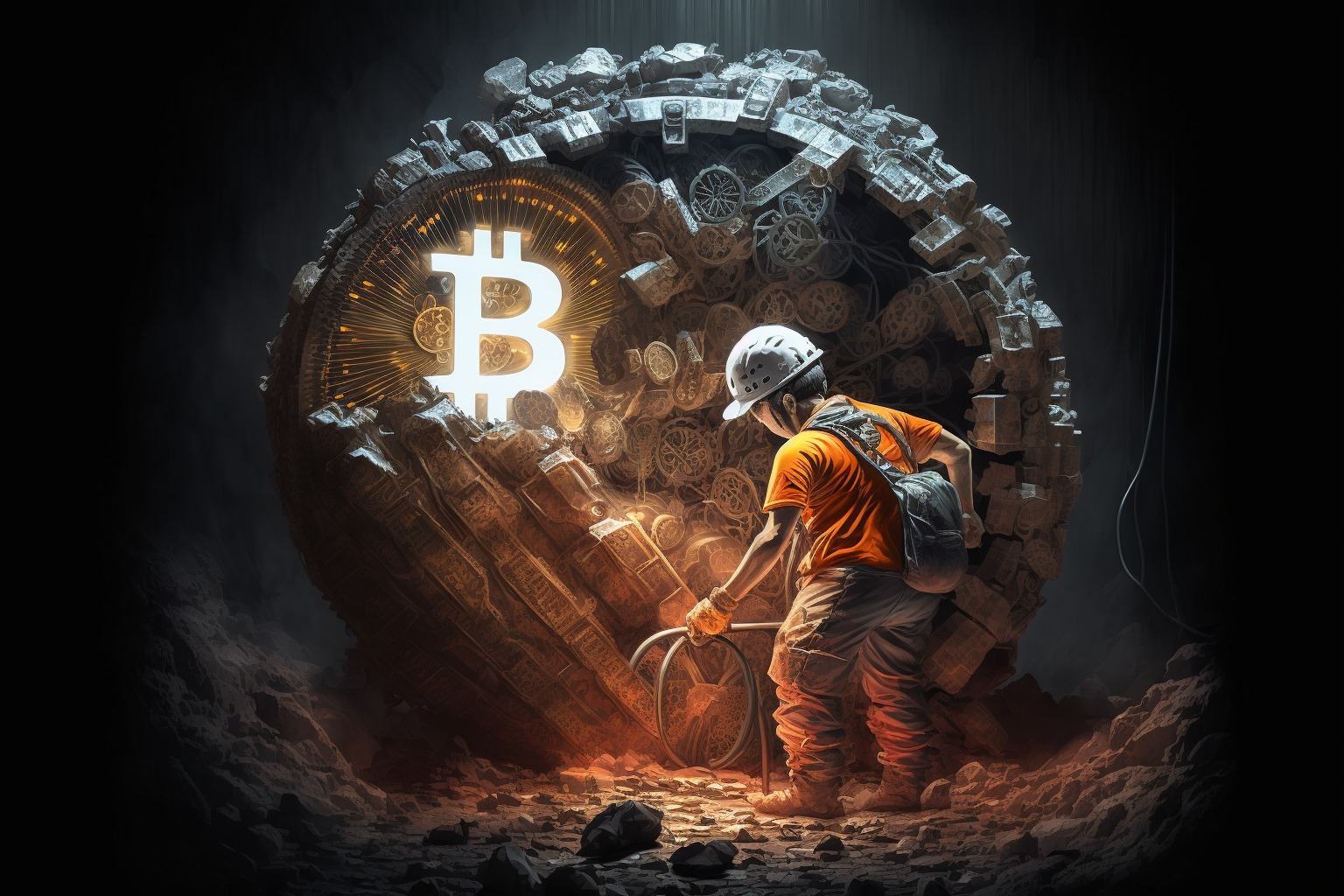In the rapidly evolving world of technology, Web3 has emerged as the next frontier for investment opportunities. This new area, characterized by decentralized networks, blockchain technology, and digital assets, is quickly transforming the way we interact, transact, and invest.
As a beginner, navigating this digital landscape can seem like wandering around on an alien planet, but fear not! We’ve created this comprehensive guide to help you take your first steps into the world of Web3 investments. By the end of this article, you’ll have a solid understanding of the key concepts, platforms, and strategies to confidently embark on your Web3 investment journey. So, let’s dive in and explore the exciting realm of decentralized finance, where innovation meets opportunity! And please remember the information presented here is not investment advice, as an active investor, you will need to conduct your own research.
What is Web3?
Web3, often referred to as the “decentralized web” or “semantic web,” represents the next phase in the evolution of the internet. Building upon the foundations of Web1 (static websites) and Web2 (dynamic, interactive web applications), Web3 aims to create a more open, user-centric, and decentralized digital ecosystem.
At the core of Web3 lies blockchain technology, which enables secure, transparent, and trustless transactions and interactions. This technology has given rise to a vast array of decentralized applications (dApps), crypto tokens, and smart contracts that automate agreements without the need for intermediaries.
Here are some key features of Web3 that differentiate it from its predecessors:
- Decentralization: Web3 is designed to remove the reliance on centralized authorities and intermediaries, such as banks, social media platforms, and data storage providers. Instead, it leverages peer-to-peer networks and distributed consensus mechanisms, promoting greater user control, security, and privacy.
- Interoperability: It envisions an ecosystem where various blockchain networks and dApps can seamlessly communicate and interact with one another, fostering innovation and collaboration across platforms and services.
- Self-Sovereign Identity: Web3 empowers users to have full control over their digital identities, enabling them to securely manage and share their data and assets across different platforms without relying on a centralized authority.
- Economic Incentives: It incorporates token-based economies, which provide incentives for users to actively participate in network governance, development, and maintenance. This creates a more equitable distribution of value and resources among the participants.
- Smart Contracts: The decentralized web leverages the power of smart contracts, which are self-executing agreements with the terms directly written into code. These contracts eliminate the need for intermediaries, reducing costs, and increasing efficiency in various industries, from finance to supply chain management.
What is the Web3 ecosystem look like?
The Web3 ecosystem is a vast and diverse landscape, encompassing many elements that work together to create a decentralized internet. In this section, we’ll delve into the key components of the Web3 ecosystem, including infrastructure, blockchain networks, protocols and services, and applications.
Infrastructure
Infrastructure in the Web3 ecosystem refers to the foundational building blocks and services that support the development, deployment, and operation of blockchain networks, protocols, and applications. Some essential components of Web3 infrastructure include:
- Node providers: These are services that host and maintain blockchain nodes, allowing developers to easily access and interact with blockchain networks without needing to run their own full node.
- Oracles: Oracles are services that provide off-chain data to smart contracts, enabling them to interact with real-world information and events.
- Interoperability solutions: These are technologies that facilitate seamless communication between different blockchain networks, allowing for cross-chain transactions and interactions.
Blockchain networks
Blockchain networks form the backbone of the Web3 ecosystem. These decentralized, distributed ledgers enable secure, transparent, and trustless transactions and interactions. Some of the most prominent blockchain networks are:
- Ethereum: Ethereum is a leading smart contract platform that allows developers to build and deploy decentralized applications (dApps) using its native programming language, Solidity. It also introduced the concept of the ERC-20 token standard, which has become the foundation for many crypto tokens.
- Binance Smart Chain (BSC): BSC is a blockchain network compatible with the Ethereum Virtual Machine (EVM), which focuses on providing high throughput and low transaction fees. It has attracted many projects and developers looking for a more scalable and cost-effective alternative to Ethereum.
- Polkadot: Polkadot is a multi-chain platform that aims to enable seamless interoperability between various blockchain networks. Its unique architecture, which includes relay chains and para chains, helps developers create and connect dApps across different platforms.
Protocols and services
Protocols and services in the Web3 ecosystem provide functionalities and features that can be integrated into dApps or utilized by end-users. Popular protocols and services include:
- Decentralized Finance (DeFi) protocols: DeFi protocols offer financial services like lending, borrowing, trading, and asset management in a decentralized manner, without the need for traditional intermediaries like banks.
- Non-Fungible Token (NFT) platforms: These facilitate the creation, trading, and management of unique assets, such as digital art, collectibles, and virtual real estate.
- Decentralized Autonomous Organizations (DAOs): DAOs are organizations that are managed and governed by their members through smart contracts, promoting a more democratic and transparent decision-making process.
Applications
Applications, or dApps, are user-facing tools and platforms built on top of blockchain networks and protocols. These applications leverage the power of decentralization, smart contracts, and digital assets to provide novel services and solutions across various industries. Some examples of dApps are:
- Decentralized exchanges (DEXs): DEXs allow users to trade digital assets directly with one another without the need for a centralized intermediary, offering greater security and privacy.
- NFT marketplaces: These platforms enable users to buy, sell, and trade NFTs, often featuring various crypto assets such as art, collectibles, and virtual goods.
- Gaming platforms: Blockchain-based gaming platforms incorporate NFTs and token-based economies to create immersive, user-driven experiences that reward players for their contributions and achievements.
How to invest in Web3?
As the Web3 ecosystem continues to grow and evolve, numerous investment opportunities arise for both novice and experienced investors. In this section, we’ll explore the strategies of how to invest in Web3, including buying and holding tokens, crypto mining, investing in ETFs, Web3 company stocks, NFTs, play-to-earn gaming, and the metaverse.
Buy and hold tokens of Web3 projects
One common approach to investing in Web3 is to purchase and hold tokens associated with promising projects and platforms. By acquiring these tokens, you gain exposure to the potential growth and success of the underlying project. Some popular tokens in the Web3 space include Ether (ETH), Polkadot (DOT), and Chainlink (LINK). To buy and store these tokens, you’ll need a cryptocurrency exchange account and a secure digital wallet.
Use crypto lending platforms
Crypto lending platforms provide users with alternative financial services that eliminate the need for traditional intermediaries like banks. These platforms enable users to lend, borrow, and earn interest on various cryptocurrencies in a decentralized, trustless, and permissionless manner.
At the core of crypto lending platforms is the concept of smart contracts, which are self-executing agreements coded on blockchain networks like Ethereum. These smart contracts facilitate lending and borrowing transactions automatically, securely, and transparently. Users deposit their cryptocurrencies as collateral and can borrow other cryptocurrencies or stablecoins in return, based on predetermined terms and interest rates.
Mine cryptocurrencies
Cryptocurrency mining involves using specialized hardware and software to validate transactions on a blockchain network. In return for their computational efforts, miners receive newly minted cryptocurrency as a reward. While mining can be profitable, it requires substantial investments in equipment, electricity, and technical expertise. The profitability of mining varies depending on factors like network difficulty and mining competition.
Buy ETFs (Exchange-Traded Funds)
Exchange-Traded Funds (ETFs) offer a more traditional way to invest in the Web3 space, providing diversified exposure to digital assets without the need to buy and manage individual tokens directly. ETFs track the performance of a basket of cryptocurrencies or related companies, allowing investors to gain exposure to the broader market. If you are looking for passive investing, this might be a good asset selection for you.
Invest in Web3 company stocks
Investing in the stocks of companies involved in the Web3 ecosystem is another way to participate in the growth of this sector. These companies may include blockchain developers, infrastructure providers, miners, hardware manufacturers or businesses that integrate Web3 solutions into their operations. Some notable examples are Nvidia, Microstrategy and PayPal. By purchasing shares in these companies, you can benefit from their potential success in the Web3 market.
Non-Fungible Tokens (NFTs)
NFTs represent unique digital assets, such as digital art, collectibles, and virtual goods. Investing in NFTs involves buying and holding a crypto asset, with the expectation that their value will appreciate over time. However, the NFT market can be highly speculative and illiquid, so it’s crucial to conduct thorough research and consider the risks before investing.
Play-to-earn gaming
Play-to-earn gaming platforms combine gaming and blockchain tech, allowing players to earn crypto tokens and NFTs through their in-game activities and achievements. By participating in these games, you can potentially generate income or accrue valuable digital assets that may appreciate in value. However, this is a very speculative area, and the profitability of play-to-earn gaming can be highly variable and dependent on the specific game and your skills. So far, no play-to-earn games have cracked the “code of success”, so at this point, you would be investing in future expectations only.
Metaverse
The metaverse refers to the emerging virtual world where users can interact, socialize, and engage in various activities through their digital avatars. Investing in the metaverse can involve purchasing virtual land, digital goods, or tokens associated with metaverse platforms. As with other investment strategies, you need to research the specific platforms and crypto assets and consider the risks associated with this nascent market.
The benefits of Investing in Web3
Now that you know how to invest in Web3, we still need to answer the question of why and whether you should do it. As the digital world evolves and the Web3 ecosystem continues to gain traction, investors are increasingly drawn to the opportunities that this new asset class presents. Investing in Web3 offers several unique benefits that distinguish it from traditional investment opportunities. In this section, we’ll explore the key advantages of investing in Web3:
Early-stage potential
Investing in Web3 allows you to tap into the growth potential of an emerging market. As the ecosystem is still in its infancy, early adopters and investors have the opportunity to capitalize on the rapid expansion and innovation that’s taking place. By investing in promising projects and platforms, you can potentially benefit from significant returns as the market matures and gains mainstream adoption.
Diversification
Web3 investments can provide an additional layer of diversification to your portfolio. The performance of digital assets and Web3-related stocks is often less correlated with traditional financial markets and assets like stocks and bonds. Modern portfolio theory states that by diversifying your investments across various sectors, including the crypto market and Web3, you can potentially reduce overall portfolio risk and increase the potential for higher returns.
Access to a new asset class
Digital assets, such as cryptocurrencies and NFTs, represent a new and distinct asset class with unique characteristics and return profiles. Investing in these assets can offer a different risk-reward balance compared to traditional financial instruments, allowing you to tailor your portfolio to your specific preferences and risk tolerance.
Democratization of finance
Web3 and its associated technologies, like decentralized finance (DeFi), are redefining the financial landscape by providing open, inclusive, and permissionless access to financial services. By investing in Web3, you’re supporting a more equitable financial system that empowers individuals and communities to participate in wealth creation and decision-making processes.
High growth potential
Many Web3 projects and platforms are built on cutting-edge technologies, such as blockchain, artificial intelligence, and virtual reality. These innovations have the potential to disrupt various industries and create new markets, which could result in significant growth opportunities for investors who are well-positioned to capitalize on these shifts.
Exposure to global markets
Web3 investments are often borderless and accessible to investors worldwide, regardless of their location. This global exposure allows you to invest in projects and platforms that may be unavailable in traditional markets, increasing the potential for diversification and unique investment opportunities.
What are the risks?
While investing in Web3 presents exciting opportunities and benefits, it also comes with a unique set of risks that should be carefully considered before making any decisions. In this section, we’ll examine the key risks associated with investing in Web3:
Market volatility
Crypto assets are known for their significant price fluctuations. This volatility can lead to large gains but also substantial losses in a short period. Active investing requires you to be prepared for the potential swings in value that Web3 investments can experience.
Regulatory uncertainty
The legal and regulatory landscape surrounding Web3, cryptocurrencies, and digital assets is still developing and varies significantly across jurisdictions. Regulatory changes can have a substantial impact on the market, and there’s a risk that certain investments could be affected by adverse regulatory developments or restrictions in the future.
Technological risks
Web3 investments rely heavily on the underlying technology, such as blockchain networks and smart contracts. These technologies, while promising, are still relatively new and can be prone to technical issues, security vulnerabilities, or even failures. Any significant technological problems could negatively impact the value of your investments.
Project and platform risks
The Web3 ecosystem is home to numerous projects and platforms, each with its own unique goals, teams, and development stages. Investing in a particular project or platform carries the risk that it may underperform, fail to deliver on its promises, or even become abandoned. Conducting thorough research and due diligence is crucial to minimize these risks.
Liquidity risk
Some Web3 investments, such as smaller-cap tokens or NFTs, may have limited liquidity, making it challenging to buy or sell them without affecting their market price. Illiquid investments can be harder to exit and may result in losses if you need to sell them quickly, particularly during periods of market stress.
Security and custody risk
Investing in digital assets requires proper security measures to protect your investments from theft or loss. This involves securely managing your private keys and using reputable wallets and exchanges. Failing to adequately secure your digital assets could result in the loss of your investments due to hacking, phishing, or other cyber threats.
Scams and fraud
As with any emerging market, the Web3 space has attracted its share of scams and fraudulent schemes, such as Ponzi schemes, exit scams, and fake projects. It’s essential to exercise caution and conduct thorough due diligence to avoid falling victim to these scams.
FAQ
Does Web3 have a stock?
Web3 itself does not have a stock, as it is not a single company but rather a concept that refers to the decentralized, peer-to-peer internet powered by the blockchain. However, there are traditional companies operating within the Web3 ecosystem whose stocks you can invest in. These companies may develop blockchain technologies, provide infrastructure services, or integrate Web3 solutions into their operations. By investing in the stocks of these companies, you can gain exposure to the growth and development of new crypto sectors.
Does Web3 have a coin?
Web3 itself does not have a specific coin, as it is a term that refers to the decentralized, peer-to-peer internet built on distributed ledger technology. However, there are numerous cryptocurrencies and tokens associated with various projects and platforms within the Web3 ecosystem. Some popular examples include Ether (ETH), which powers the Ethereum network, and Polkadot (DOT), the native token of the Polkadot platform. These cryptocurrencies and tokens play a vital role in facilitating transactions, governance, and other functions within their respective Web3 networks.
What companies are leading Web3?
One of the most prominent players in the Web3 space is the Ethereum Foundation, which oversees the development of the Ethereum blockchain. Ethereum is a leading smart contract platform that has become the backbone of many dApps and decentralized finance (DeFi) projects, making it a crucial element of the Web3 ecosystem.
Another major contributor to Web3’s growth is Consensys, a blockchain software company focused on the Ethereum ecosystem. Consensys develops tools, infrastructure, and applications for the decentralized web while also providing consulting services and educational resources to help businesses adopt and implement blockchain tech.
Chainlink, a decentralized oracle network, is also playing a vital role in advancing Web3. Chainlink enables smart contracts to access off-chain data, bridging the gap between blockchain networks and real-world information. This functionality is crucial for many Web3 applications that require accurate, up-to-date data from external sources.
These are just a few examples of the many companies and projects contributing to the growth and development of the Web3 ecosystem. As the space continues to evolve, it’s likely that new leaders will emerge, and existing ones will continue to innovate and expand their offerings.






